By Christopher Little
When first arriving in Nemaska, a small community of 760 persons in Northern Quebec one sees a community that looks as prosperous as any Southern Canadian counterpart. Residents are serviced by a modern airport, have access to new swimming and fitness facilities, and new buildings are constantly under construction
This appearance of prosperity, however, disguises many of the difficult historical experiences that community members have confronted. Indeed, the reason that Nemaska and many other communities in the region appear so new is that they were constructed largely since the 1980s, after the Cree were forced into a sedentary way of living that began during the fur-trade period and culminated with the James Bay Hydroelectric Project and the flooding of their lands.
As a Gladue writer for the Department of Justice and Correctional Services of the Cree Nation Government, part of my placement has been devoted to conducting historical research about the community. It is this information, some of which is presented below, which allows the Court to better understand why some offenders appear before the Court and which may therefore diminish the moral blameworthiness of the offender.
The James Bay Hydroelectric Project
The defining event of the modern life for the Cree of the James Bay has been the creation of the James Bay Hydroelectric Project. This project began with Quebec’s desire to harness the natural resources of the land to complete its modernization. The construction of the Hydro-Electric Project was a central feature of Robert Bourassa’s 1970 electoral campaign and his promise to create 100,000 jobs, and once elected, he saw that the project was a priority.
This project, which would require changing river flows and create massive flooding, threatened the Cree way of life which was depended upon continually moving across the landscape in small, extended family groupings, to harness game resources. Although Cree groups in the James Bay did gather around the Hudson’s Bay Company trading posts where they sold furs, acquired supplies, socialized and arranged marriages, this typically occurred only in the summer months when game was scarce and fish thus became the primary subsistence food.
In advance of this project, the Nemaska people who had settled around the trading post at Lac Némiscau were visited by Hydro-Quebec officials and told that their land would be flooded and that they would have to move. For this and other reasons, such as the closure of the Hudson’s Bay trading post, Nemaska people were relocated by the Federal government, with half going to Mistissini and half to Waskaganish (Rupert House).
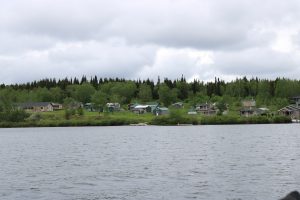
However, at the time, the Cree did not have an overarching identity and instead, “the region was comprised of eight different communities having relatively little to do with each other… [and] whose primary allegiances were to their own communities (and in fact in some cases even to smaller units than the community).”[1] As such, the Nemaska people were largely treated as outsiders in other communities, and forced to erect housing on the least desirable lands.
While beginning to transition to a sedentarized life, Nemaska people experienced other difficulties as well. For instance, elders recall that the time in exile was the first time that people had sustained access to alcohol and that alcohol overconsumption became a pressing social issue. Likewise, the time in exile also disrupted traditional cultural practices such as fishing since people from the inland were unfamiliar with coastal tidal waters.
While living in exile, the James Bay Hydro Electric Project proceeded without consultation with the Cree. It was only a young generation of Cree leaders, such as Philip Awashish and Billy Diamond, who heard about the project by reading a day-old copy of the Montreal Star, used their residential education, to organize resistance and launch a legal challenge that brought the Quebec government to the negotiating table.[2]
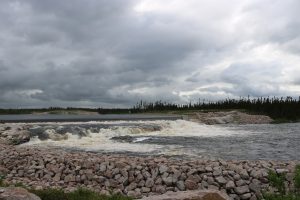
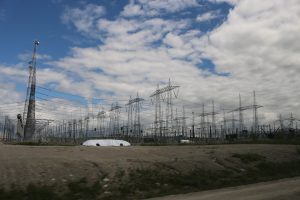
Creating a Community
The James Bay and Northern Quebec Agreement (JBNQA) provided for the relocation of members of the Nemaska band to a new site. As such, in 1978, those who were exiled at Mistissini and Waskaganish were re-located to the shores of Champion Lake. However, even after being re-located to their new community, the Nemaska people continued to experience hardship because the government was not fulfilling their terms of the JBNQA. In 1980, for instance, an epidemic of gastro-enteritis resulting from insalubrious living conditions hit Nemaska and three children died.
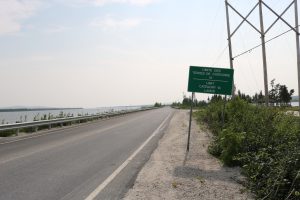
In 1981, then M.P. for Cariboo-Chilcotin, Lorne Greenway, read the following into the record of the Standing Committee on Indian Affairs and Northern Development:
In August 1980 the Quebec ministère des Affaires sociales (MAS) received word from the Cree Indians of James Bay that an epidemic had broken out in their villages of Nemaska and Fort-Rupert. A mission of medical and environmental specialists was dispatched to the scene. They found: people living in substandard housing; appalling sewage and waste water disposal facilities; contaminated water supplies; poor hygiene and relative isolation from the outside world. In Nemaska, for instance, some 35 families still lived in tents, awaiting the construction of houses on permanent sites, five years after the Agreement was signed. Furthermore, the village’s isolation from the provincial road network limited outside communication to air and motor-canoe. Solid garbage and waste were being dumped into a site near the edge of Lake Champion, a shallow lake that will not long tolerate such practices without becoming polluted.[3]
While more suitable residences were eventually constructed—though housing shortages continue to plague the community—sedentarization had additional social consequences. Living in houses designed for nuclear families, for instance, upended traditional living arrangements which were based upon extended or multi-family cohabitation. A diet which had once been based around game meat was replaced by processed foods imported from the South. Likewise, whereas once every activity had been oriented towards the locality, after settling on reservations, people were now incorporated into complex administrative structures based in distant cities such as Val-d’Or.
Other more existential questions, however, were more difficult to answer: How do people who came to see themselves as “hunters and trappers,” now adopt to making a living through wage labour? How do people without a tradition of communal living—or even, perhaps, a notion of community in the sense of Western social theory—successfully live together? And finally, how do people who have experienced so much hardship, move forward with their lives in the context of radical change?
Gladue and Restorative Justice
These last two questions are ones to which there is no clear answer, and they become particularly acute in the context of serious crime and persistent offenders. Statistics illustrate that aboriginal persons are three times more likely to be victimized by crime than other Canadians.[4] Further, “Perpetrators of violence against Aboriginal people are most often other members of the Aboriginal community such as spouses, relatives, or friends of the victim, and as such, victimization among Aboriginal people in Canada is often regarded as a mirror image of Aboriginal offending.”[5]
The justice system has largely relied upon imprisonment to address of aboriginal offenders, leading to the problem of aboriginal overrepresentation that I previously discussed. However, given the colonial history of aboriginal populations—some of which is discussed above—those appearing before the court as offenders are, from another perspective, also victims.
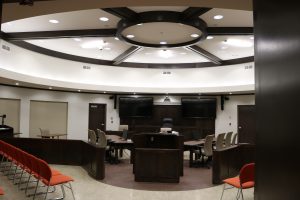
Gladue reports allow for the possibility to address this dual victimization through restorative justice. Restorative justice approaches see crime as both a violation of the law and as a violation of relationships and communities. They therefore involve those affected by a crime to try to repair the harm done while encouraging an offender to take responsibility for their actions. Restorative justice approaches therefore not only allows the offender to grow through the process but, for all those to have their say in any proposed solutions.
Gladue reports allow for the possibility to address this dual victimization through restorative justice, which sees crime as both a violation of the law and as a violation of relationships and communities. Gladue reports allow for the realization of restorative justice in several ways, but most obviously by proposing sentences to the Court that address the underlying issues that brought an offender to appear before the Court. Courts in the James Bay region, for instance, have allowed offenders to participate in Sun Dances as well as attend land-based programs given that spending time on the land “is recognized throughout Cree society as a potential source of personal improvement.”[1] These restorative sentencing options are tailored to suit the particular offender and the community, and emerge from interviews with the offender and others, allowing those impacted by crime to have a say in its resolution.
Additionally, since Gladue reports engage with the life history of the offender, supplemented by information from other family members, the process of creating and reviewing the report allows the person to reflect upon their life experiences as well as their offences. They are often therefore able to plot a better path forward, both for themselves and their community, that will allow them to live a more harmonious life.
[1] Paul Wertman, 1983. Planning and Development after the James Bay Agreement. The Canadian Journal of Native Studies 3(2) at page 278.
[2] Ronald Niezen, 1998. Defending the Land: Sovereignty and Forest Life in James Bay Society (New Jersey: Prentice Hall) at page 48.
[3] Standing Committee on Indian Affairs and Northern Development, 32nd Parliament, 1st Session. March 26, 1981 at page 1101.
[4] Jodi-Anne Brzozowski, Andrea Taylor-Butts, and Sara Johnson, 2006. Victimization and offending among the Aboriginal population in Canada (Ottawa: Canadian Centre for Justice Statistics) at page 1.
[5] Katie Scrim, 2017. Aboriginal Victimization in Canada: A Summary of the Literature. Available: < https://www.justice.gc.ca/eng/rp-pr/cj-jp/victim/rd3-rr3/p3.html>
